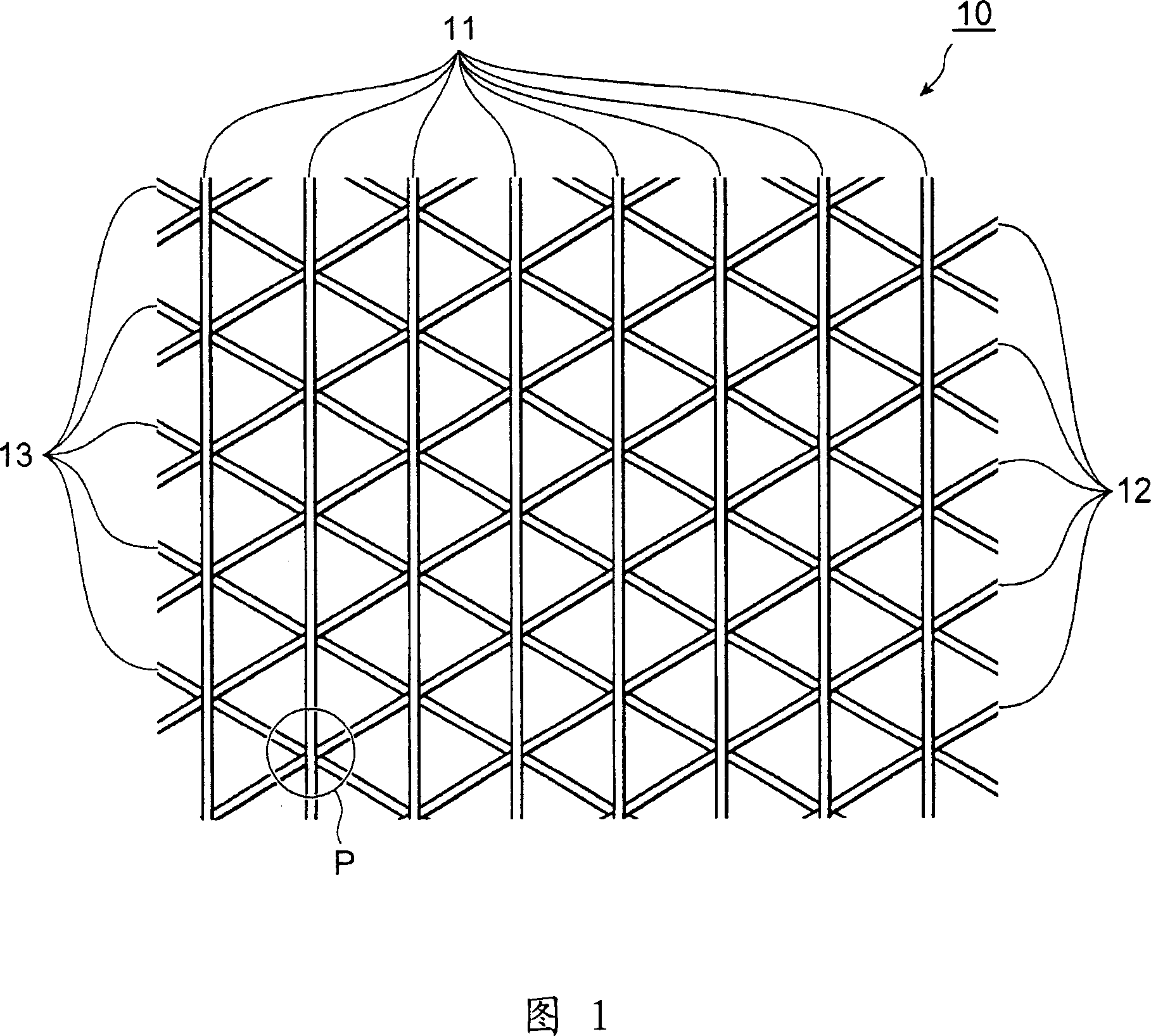Process for producing nonwoven fabric and nonwoven fabric
A manufacturing method and technology of non-woven fabrics, which are applied in the direction of textiles and papermaking, textiles, non-woven fabrics, etc., can solve the problem of poor softness or bendability of woven fabrics and mesh fabrics, poor operating environment of non-woven fabrics, increased Problems such as gaps between fibers, to achieve the effect of easy melting, preventing deformation or cutting, and preventing deformation of composite wires
- Summary
- Abstract
- Description
- Claims
- Application Information
AI Technical Summary
Problems solved by technology
Method used
Image
Examples
Embodiment
[0099]
[0100] Isotactic polypropylene of MFR=20 (g / min) was used as the thermoplastic resin of the core resin, and low-density polyethylene resin of MI (190° C.)=20 (g / min) was used as the sheath resin. The standard composite spinning equipment uses a core-sheath type composite spinning nozzle (150H) to obtain spun yarn. Pass 150 obtained resin single fibers through the stretching equipment directly connected with it, and carry out roll stretching with a full stretch ratio of 14 times under the saturated water vapor pressure of an absolute pressure of 4.2kPa (145)°C, (immediately pass through a forming die of a specified shape, ) to obtain an approximately elliptical composite wire (mass ratio of island resin to sea resin = 55:45) in which low-density polyethylene (melting point 113° C.) of sea resin is combined with polypropylene fiber (melting point 165° C.) of island resin .
[0101] The obtained composite thread was 2200 dtex, the single fiber diameter of the island r...
PUM
| Property | Measurement | Unit |
|---|---|---|
| melting point | aaaaa | aaaaa |
| melting point | aaaaa | aaaaa |
| melting point | aaaaa | aaaaa |
Abstract
Description
Claims
Application Information
 Login to View More
Login to View More - R&D
- Intellectual Property
- Life Sciences
- Materials
- Tech Scout
- Unparalleled Data Quality
- Higher Quality Content
- 60% Fewer Hallucinations
Browse by: Latest US Patents, China's latest patents, Technical Efficacy Thesaurus, Application Domain, Technology Topic, Popular Technical Reports.
© 2025 PatSnap. All rights reserved.Legal|Privacy policy|Modern Slavery Act Transparency Statement|Sitemap|About US| Contact US: help@patsnap.com



